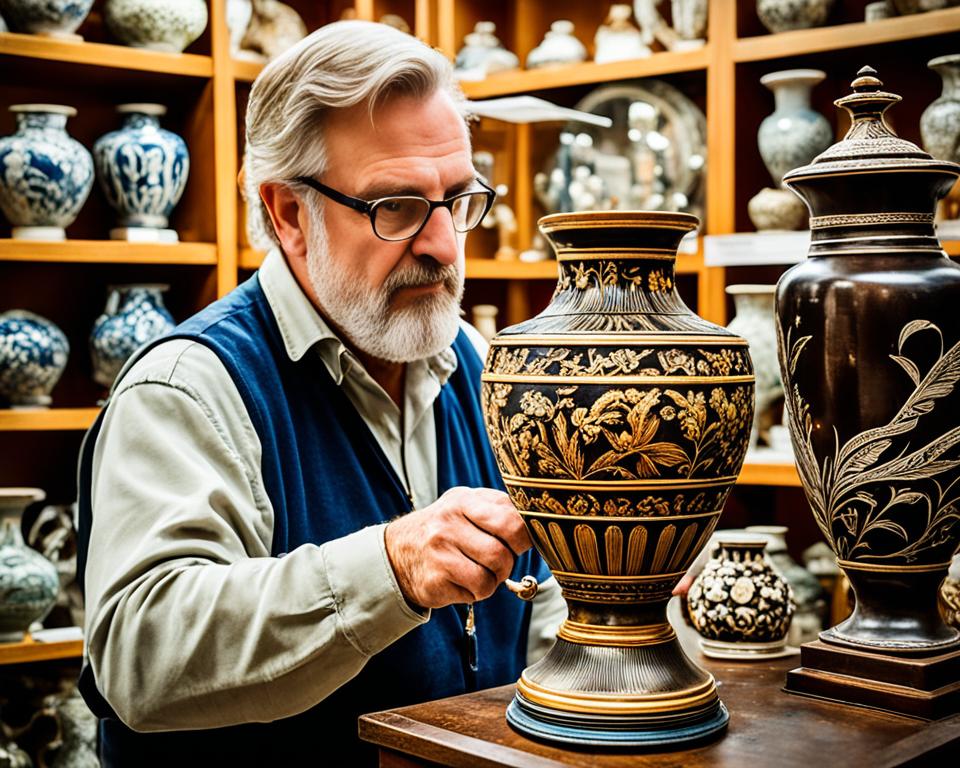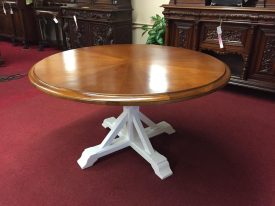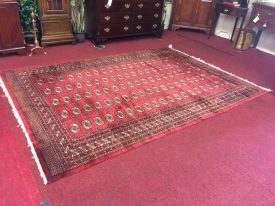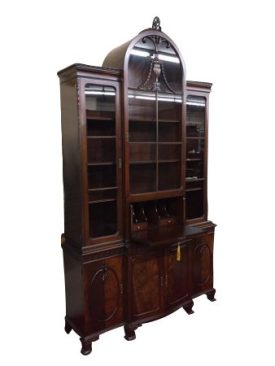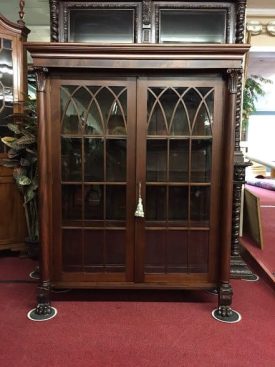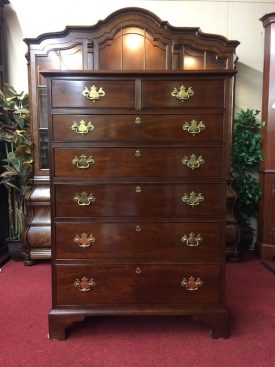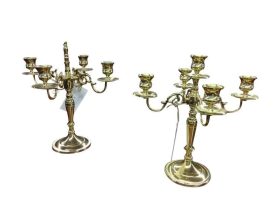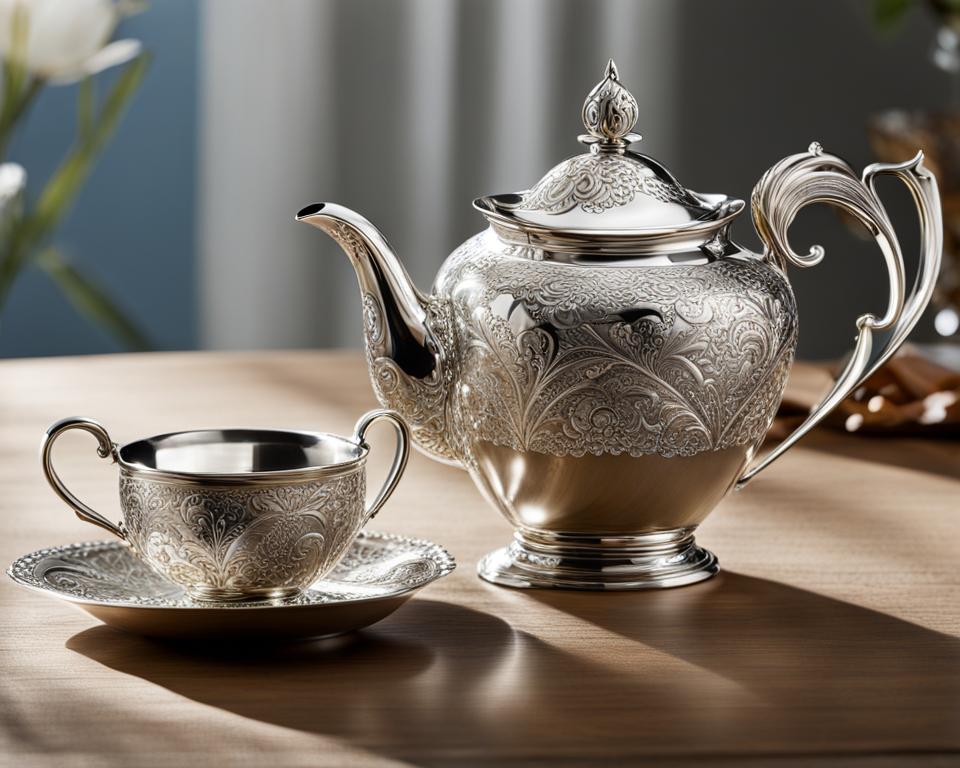Authenticating the age and origin of antique decor items is a crucial step in determining their value and authenticity. Whether you’re a collector or looking to add a unique piece to your home, verifying the authenticity of antique items can be a challenging task. Fortunately, there are various methods and steps you can take to authenticate these items accurately.
Key Takeaways
- Authenticating antique decor items involves verifying their age and origin.
- Buying from reputable sources is essential to ensure the item’s authenticity.
- Look for maker’s marks or signatures to validate the piece’s authenticity.
- Provenance documents and historical records can provide valuable information about the item’s origin.
- Conducting thorough research and inspecting different aspects of the item can help determine its authenticity.
Buy from a reputable source
When it comes to purchasing antique decor items, it’s crucial to buy from reputable sources. This ensures that you are getting authentic pieces with accurate information and provenance. There are several options for finding trusted sellers and reliable antique sources.
Reputable Antique Dealers
One way to ensure the authenticity of your antique decor purchase is to buy from reputable antique dealers. Look for established dealers who have a history of handling the specific type of material or era you are interested in. Reputable dealers often have expertise and knowledge in their field, ensuring that the items they sell are genuine.
Vetted Online Marketplaces
Online marketplaces such as 1stDibs are another trusted source for finding authenticated antiques. These platforms often work with vetted sellers who have been carefully evaluated for their expertise and reliable inventory. When browsing through online marketplaces, look for trusted sellers with positive reviews and a track record of selling authentic vintage and antique items.
Working with reputable sellers provides assurance that the item’s information and provenance can be trusted.
By buying from reputable antique dealers or vetted online marketplaces, you can have confidence in the authenticity and quality of your antique decor purchase. It’s important to do your research and choose sellers with a solid reputation in the antique industry.
| Sources | Benefits |
|---|---|
| Reputable Antique Dealers | Expertise and specific knowledge in their field |
| Vetted Online Marketplaces | Carefully evaluated sellers and reliable inventory |
When it comes to investing in antique decor, buying from reputable sources ensures that you are getting genuine items with accurate provenance. Take the time to find trusted sellers and reliable antique sources for your purchases, and enjoy the beauty and history of your authentic antique pieces.
Look for a maker’s mark
When authenticating antique furniture, one valuable clue to consider is the presence of a maker’s mark or designer signature. These marks indicate the original producer or brand associated with the piece. However, it’s important to note that not all authentic pieces feature stamps or signatures, and some stamps can be forged. To effectively identify and authenticate a maker’s mark, thorough research is necessary.
Start by researching the specific marks and signatures associated with the brand or designer you’re interested in. Look for books, online resources, and databases that provide information on known marks and signatures. For example, Eames furniture often includes labels or stamps that can help authenticate and determine the age of the piece.
Keep in mind that artisans and designers may have used different marks or signatures during different periods, so it’s crucial to match the mark or signature with the estimated age of the piece. By cross-referencing historical references and publications, you can gain valuable insights into the authenticity and provenance of the furniture.
Remember, a genuine maker’s mark contributes to the overall authenticity and value of an antique furniture piece. However, it’s important to consider other factors alongside the presence of a mark, such as construction techniques, materials used, and overall design, to ensure a comprehensive authentication process.
“A maker’s mark serves as a valuable clue in authenticating antique furniture, but thorough research and cross-referencing are necessary to ensure accurate identification.”
| Advantages of finding a maker’s mark | Disadvantages of finding a maker’s mark |
|---|---|
|
|
Ask for documents of provenance
When it comes to authenticating antique decor items, having access to provenance documents can be invaluable. Provenance refers to the documented history of an item, including its origin, ownership, and historical significance. These documents can provide crucial information that helps verify the authenticity and age of an antique piece.
One type of document to look for is estate inventories. When an estate is settled, inventories are often created to list and evaluate the deceased person’s belongings. These inventories can include detailed descriptions of antique items, along with their estimated value. Examining these records can help trace the lineage of an antique and confirm its authenticity.
Photographs can also serve as important documents of provenance. Old photographs that showcase the antique decor item in its original state can provide visual evidence of its age and condition. Comparing these images to the current state of the item can help determine if any significant alterations or restorations have occurred.
Another valuable source of provenance information is documented inclusion in museum exhibits or publications. If an antique piece has been featured in a reputable museum exhibit or mentioned in a publication, it adds weight to its authenticity and historical significance. Researching museum archives and checking relevant publications can help you find documented instances of an antique’s presence and establish its provenance.
In addition to the above sources, probate inventories and wills can also yield important clues about an antique’s origin and history. These legal documents often list the deceased person’s possessions, including any valuable or significant antique pieces. Wills can provide insights into the provenance of an item if it has been bequeathed through generations.
While not all antique decor items come with extensive provenance documentation, there are occasions where family history can help validate their authenticity. Items passed down through generations often come with associated family stories or anecdotes that shed light on the item’s origin and history. Exploring family records, heirlooms, and conducting interviews within the family can often reveal valuable information.
To summarize, antique provenance documents such as estate inventories, photographs, museum records, probate inventories, and wills can provide the necessary evidence to authenticate the age, origin, and historical significance of antique decor items. When considering the purchase of an antique piece, it’s essential to thoroughly investigate the available documents and sources of provenance to ensure its authenticity and value.
Do your own research
Researching antique furniture is a crucial step in determining the age and origin of an antique decor item. By exploring various resources, you can gain valuable insights into furniture styles, construction methods, and materials used during a specific era.
Start by delving into books and online resources that focus on the history of furniture and interior design. These references can provide you with a wealth of information about different styles and their corresponding time periods. Look for publications that offer detailed illustrations and descriptions of antique furniture to help you identify key characteristics.
Analyzing historical references
“Historical references play a vital role in authenticating antique furniture.”
Museum visits are another valuable research method. By analyzing pieces in museum collections, you can observe firsthand the materials, techniques, and design elements used in authentic antique furniture.
During your museum visits, take note of the furniture’s construction details, joinery techniques, and surface finishes. Look for distinct features that are indicative of specific periods or styles. Museums often provide labels or information boards near the exhibits, offering additional insights into the historical context and background of the furniture. Make sure to take photographs or sketches of pieces that catch your interest for later reference.
Analyzing materials and techniques
“Analyzing the materials and techniques used in antique furniture can offer valuable clues about its age and authenticity.”
Analyzing materials and techniques used in antique furniture can help you distinguish between authentic vintage or antique pieces and their modern counterparts.
When researching materials, focus on understanding the types of wood, upholstery fabrics, and hardware commonly used during different periods. Pay attention to the characteristics and color variations of various wood species, as well as the design patterns and motifs frequently seen in upholstery fabrics.
Consider comparing the construction techniques and joinery methods used in similar antique pieces. Note the presence or absence of hand tool marks, irregularities in surfaces, or indications of machine-made production. These details can provide essential clues about the age and authenticity of the furniture.
| Research Tips | Description |
|---|---|
| Visit museums | Observe authentic antique furniture and study construction details, materials, and design elements. |
| Consult books and online resources | Gain insights into different furniture styles, materials, and historical references through specialized literature. |
| Analyze materials and techniques | Compare the materials, joinery techniques, and finishes used in authentic antique pieces to identify patterns and commonalities. |
Do a “run-down” of materials and construction techniques
Examining the materials and construction techniques used in antique furniture can provide valuable insights into its age and authenticity. When assessing a piece, it’s important to pay attention to specific details that can help you distinguish handcrafted pieces from modern reproductions.
One key aspect to consider is the presence of tool marks, such as saw kerfs and plane marks. These marks indicate that hand tools were used in the construction process, suggesting that the piece is more likely to be authentic. Hand tools leave more irregular and distinctive marks, reflecting the craftsmanship of the time.
On the other hand, modern electrical-powered tools leave regular and consistent marks, which may suggest that the piece is a modern reproduction rather than an antique.
Analyzing tool marks can be a bit tricky, as it requires knowledge of what these marks should look like for different periods and regions. Researching historical tool marks and comparing them to the marks found on the piece you’re considering can help you make a more accurate assessment of its authenticity.
Additionally, inspecting the types of materials used in the piece can provide further clues. For example, certain woods were favored during specific eras, so identifying the wood type can help narrow down the potential age range of the furniture.
By carefully examining materials, construction techniques, and tool marks, you can gain a better understanding of the age and authenticity of an antique piece, empowering you to make an informed purchasing decision.
Ask for pre-restoration photos
Requesting pre-restoration photos is a valuable step in the process of authenticating antique furniture. When considering the purchase of an antique item, it is important to evaluate its authenticity and age. By asking for pre-restoration photos, you can gather evidence that will assist you in making an informed decision.
Reputable restorers often have images of the antique piece before it underwent extensive cleaning or refinishing. These pre-restoration images offer a glimpse into the item’s original condition, allowing for a closer examination of its authenticity.
Authentic antiques may exhibit signs of age and wear, such as a dark or nearly black appearance for pieces from the 18th and early 19th centuries. These characteristics can become obscured by restoration work if not properly documented.
On the other hand, if a piece appears spotless or completely painted over, it may indicate restoration aimed at concealing underlying issues. By comparing the pre-restoration photos to the current state of the item, you can evaluate the extent and quality of restoration work.
Verifying restoration work is crucial for ensuring the integrity of an antique furniture piece. Evaluating pre-restoration photos allows you to closely inspect the original surface and identify any discrepancies that may affect its value or authenticity.
Remember, requesting pre-restoration photos is an essential aspect of the antique authentication process, providing you with the necessary information to make an informed decision about your potential purchase.
Accept flaws as adding character
Antiques and vintage pieces possess a distinctive charm that comes from their unique patina and signs of age. These flaws, far from being considered damage or wear and tear, are instead prized by antique enthusiasts for the visual interest, warmth, and captivating narrative they bring to a space. By embracing the imperfections of an antique, you can truly appreciate its authentic character.
The Beauty of Antique Patina
One of the most captivating characteristics of antique decor items is the patina that develops over time. Patina refers to the natural change in the surface appearance of an object as it ages. It can manifest as a subtle discoloration, a gentle sheen, or even small cracks and imperfections that add depth and soul to the piece. The patina is a testament to the journey an antique has undergone throughout its history, resulting in a truly one-of-a-kind aesthetic.
Signs of Age Tell a Story
Signs of age, such as worn edges, faded colors, or minor scratches, serve as visual markers of an antique’s journey through time. These marks don’t detract from the value or appeal of an item; in fact, they enhance its authenticity. Each imperfection tells a story of past owners, previous use, and the passage of time, enriching the narrative of the piece and giving it a tangible connection to history.
Unique Characteristics That Captivate
Antiques often possess unique and idiosyncratic characteristics that make them stand out. These may be unconventional design elements, unconventional materials, or subtle details that reflect the craftsmanship of a bygone era. It is these distinctive attributes that set antiques apart from mass-produced contemporary items, elevating them to objects of intrigue and visual allure.
Visual Interest and Antique Aesthetics
Antiques offer unparalleled visual interest and aesthetics that cannot be replicated by modern pieces. Their intricate details, rich textures, and artistic craftsmanship captivate the eye and invite closer examination. Whether it’s the delicate carvings on a vintage cabinet or the hand-painted motifs on an antique vase, these unique qualities contribute to the undeniable beauty of antique decor.
When incorporating antiques into your interior design, relish in their flaws and originality. Let them take center stage and become conversation pieces that evoke admiration and curiosity. Embracing the antique patina, signs of age, and unique characteristics of these remarkable items ensures that you are celebrating their antique aesthetics and preserving their timeless allure.
Examine the inside, back, and bottom surfaces of the furniture
When it comes to authenticating antique furniture, it’s essential to go beyond the surface and explore the less obvious areas. Examining the inside, back, and bottom surfaces of the piece can provide valuable insights into its authenticity. These areas often reveal authenticity indicators, including rough surfaces, tool marks, and construction details that can help determine the age and craftsmanship of the furniture.
By closely examining the inside of the piece, you may discover rough surfaces that suggest hand craftsmanship. Pre-1860 pieces, for example, often exhibit signs of hand-tooling, resulting in distinctive marks and irregular surfaces. On the other hand, modern power tools leave cleaner and more uniform finishes, indicating a more recent creation.
Turning your attention to the back and bottom surfaces of the furniture can also yield valuable information. Look for tool marks, such as saw kerfs or plane marks, which can provide clues about the construction methods used in the piece’s creation. Hand tools leave unique and irregular marks, whereas modern tools leave more consistent and uniform impressions.
Understanding construction details is another important aspect of authenticity assessment. Traditional construction methods, such as dovetail joints or mortise and tenon joints, were commonly used in antique furniture. Examining these details can give you a sense of the craftsmanship and provide insights into the age of the piece.
To illustrate, let’s consider a specific example: a pre-1860 cabinet with rough surfaces, distinctive tool marks, and traditional construction details. These authenticity indicators would suggest that the piece was likely crafted by hand using traditional techniques, indicating its age and adding to its historical value.
Tool marks and construction details
Table 9 below highlights some common tool marks and construction details to look for when examining the inside, back, and bottom surfaces of antique furniture.
| Authenticity Indicators | Description |
|---|---|
| Rough Surfaces | Irregular or uneven surfaces suggesting hand craftsmanship |
| Tool Marks | Distinctive markings indicating the use of hand tools |
| Construction Details | Traditional joinery techniques like dovetail or mortise and tenon joints |
Check the fabric
The fabric used in antique furniture can provide valuable insights into its age and authenticity. When examining an antique piece, it’s important to assess the fabric’s authenticity and determine if it matches the appropriate era. Conducting thorough research and comparing the fabric design to historical references can help in the process of fabric identification.
Authentic fabric assessment
To determine if the fabric is authentic, consider the following factors:
- Look for fabric designs that were popular during the specific time period the furniture piece is associated with.
- Compare the fabric to historical references or pattern books to identify if it matches the style and design of the era.
- Examine the quality and craftsmanship of the fabric, including the weave, thread count, and any hand-painted or embroidered details.
Fabric design matching
Matching the fabric design to the appropriate era is crucial in determining the age and authenticity of an antique piece. By comparing the fabric to historical references and pattern books, you can gain insights into its origin and timeframe. Look for specific design elements, motifs, and color palettes that align with the period the furniture piece belongs to.
Original textile identification
Identifying original textiles can significantly contribute to understanding the age and value of an antique piece. Original fabric can provide valuable insights into the history and provenance of the furniture. Conducting in-depth research and consulting textile experts or guides can help you accurately identify and authenticate the original textile used in the piece.
Remember, the fabric used in antique furniture is a valuable clue to its age and authenticity. By carefully assessing the fabric, comparing it to historical references, and conducting thorough research, you can gain a better understanding of the piece’s origin and its place in history.
Check the wood for type and cut
One of the key aspects to consider when authenticating antique furniture is examining the wood used in its construction. Different types of wood were popular during specific periods in furniture history, making wood identification a valuable tool in determining the age of a piece.
Oak, mahogany, cherry, walnut, and maple are common hardwoods found in antique furniture. By researching the characteristics and availability of these woods during different time periods, you can narrow down the potential age range of the piece you are examining. For example, English oak was commonly used in the 16th and 17th centuries, while mahogany gained popularity in the 18th century.
When assessing the wood, pay attention to characteristic features such as grain patterns and color variations, as they can provide additional clues about the origin and age of the wood. Additionally, examining the cut of the wood can help determine if traditional or modern methods were used in its production.
Wood Identification Chart
| Wood Type | Characteristics |
|---|---|
| Oak | Durable, distinct grain pattern, often used in Tudor and Jacobean furniture. |
| Mahogany | Rich, reddish-brown color, fine grain, popular during the Georgian and Victorian periods. |
| Cherry | Smooth texture, reddish-brown color that deepens with age, commonly seen in American Colonial furniture. |
| Walnut | Dark brown color, medium to coarse grain, widely used during the Renaissance and Baroque periods. |
| Maple | Light-colored wood, often used in American Colonial and Federal furniture, characterized by a tight, fine grain. |
By familiarizing yourself with the characteristics of different woods and their historical usage, you can confidently assess the age and authenticity of antique furniture based on the wood used in its construction.
Inspect the screws or nails to help determine age
When examining antique furniture, a close inspection of the screws and nails can provide valuable clues about its age and authenticity. The type of screws or nails used in the construction of an antique piece can reveal whether it is older or more recent.
Handmade screws or nails suggest that the piece is older, as machine-made versions did not come into common use until the 20th century. These handmade fasteners often exhibit irregularities, such as variations in size and shape, and may show signs of the tools used in their creation.
In contrast, machine-made screws and nails are typically uniform in size and shape, as they were mass-produced using machinery. Look for consistent markings and standardized features to identify machine-made fasteners.
Examining the screws or nails used in an antique piece can help determine its age, providing insights into the craftsmanship and techniques used during its creation.
Handmade vs. Machine-made
“Handmade fasteners suggest an older piece, while machine-made ones indicate a more recent creation.”
Determine the style of the piece
Understanding the different furniture styles and design characteristics associated with specific historical eras is key to effectively identifying the age of an antique piece. By consulting reference materials or seeking expert advice, you can determine if the piece falls into categories such as Colonial, Chippendale, William and Mary, Federal, or American Empire. Familiarizing yourself with the common design elements and features of each style will enable you to make accurate age determinations.
Common Antique Furniture Styles
| Style | Features | Era |
|---|---|---|
| Colonial | Simple, straight lines; turned legs; brass hardware | 17th-18th century |
| Chippendale | Ornate carvings; cabriole legs; ball-and-claw feet | Mid-18th century |
| William and Mary | Curved lines; decorative motifs; turned legs | Late 17th-century |
| Federal | Neoclassical influence; straight lines; delicate details | Late 18th-early 19th century |
| American Empire | Bold, heavy designs; rich wood veneers; classical motifs | Early-mid 19th century |
Developing a comprehensive understanding of each style’s distinguishing features will help you accurately assess the age and authenticity of an antique decor item. By recognizing the design characteristics associated with specific historical eras, you can confidently determine the style and age of an antique piece.
Hire an expert
If you’re unsure about the age and origin of an antique decor item, it’s highly recommended to hire an expert for a professional inspection. Antiques experts possess extensive knowledge and experience in authenticating and assessing these items. They can provide invaluable insights and ensure a proper valuation of your antique decor, giving you the confidence and assurance you need.
An antique appraisal conducted by a professional brings several advantages. First, experts have a deep understanding of different antique fields and specialties, allowing them to accurately assess the age, origin, and authenticity of your item. They have access to resources, databases, and historical records that the average person may not have, enabling them to provide expert opinions based on careful analysis and research.
Valuation services offered by these experts are particularly valuable if you’re considering selling or insuring your antique decor. Their knowledge of the market and expertise in antique valuation ensures that you receive a fair and accurate estimate of your item’s worth. This information can be crucial in making informed decisions regarding your antique decor.
Expert opinion and professional inspection are key to obtaining reliable and comprehensive information about your antique decor. Hiring an expert provides the expertise and guidance necessary to authenticate your item and gain a deeper understanding of its historical significance.
Tips for hiring an expert
When seeking a professional for antique appraisal and inspection, consider the following tips:
- Choose someone with experience and expertise in the specific type of antique you have. Different experts specialize in various antique fields, such as furniture, ceramics, paintings, or jewelry. Find an appraiser or inspector who is knowledgeable and well-versed in your item’s category.
- Look for certifications and qualifications. Many professional organizations, such as the International Society of Appraisers (ISA) or the Appraisers Association of America (AAA), provide certifications for qualified experts. Hiring someone with these credentials ensures that you’re working with a reputable professional.
- Request references or reviews from previous clients. Hearing about others’ experiences can help you gauge the quality and reliability of an expert’s services. Testimonials or reviews from satisfied customers can provide reassurance and confidence in their abilities.
- Discuss the scope of the appraisal or inspection beforehand. Make sure the expert understands your specific needs and expectations. Clarify the purpose of the evaluation, whether it’s for insurance, selling, or personal knowledge. This will help the expert tailor their approach and provide the relevant information you require.
- Ask about their fees and payment structure. Understand the cost involved in hiring an expert, including any additional charges for written reports or travel expenses. It’s essential to have a clear understanding of the financial implications before proceeding with their services.
Hiring an expert for antique appraisal and professional inspection is a prudent step to take when authenticity, age, and origin verification are crucial. Their expertise and specialized knowledge ensure that you receive the most accurate and reliable information about your antique decor item, giving you peace of mind and confidence in your investment.
Conclusion
Authenticating antique decor items and verifying their age and origin is a meticulous process that requires attention to detail, extensive research, and expert knowledge. By following the tips and steps provided in this article, you can enhance your ability to determine the authenticity of antique pieces confidently.
One crucial factor to consider is buying from reputable sources. Established antique dealers and trusted online marketplaces like 1stDibs offer vetted and authenticated items, ensuring the reliability of the information and provenance provided.
Additionally, conducting your own research and examining various aspects of the item can provide valuable insights. Look for maker’s marks, request documents of provenance, inspect materials and construction techniques, check for pre-restoration photos, and embrace the imperfections that contribute to the antique’s character.
However, when in doubt or faced with highly valuable items, it’s advisable to consult experts who specialize in antique authentication and appraisal. Their expertise and professional advice can ensure a thorough evaluation and accurate determination of the item’s age and origin.
FAQ
How can I authenticate the age and origin of antique decor items?
Authenticating the age and origin of antique decor items can be done through various methods. Some of the key steps include purchasing from reputable sources, looking for maker’s marks or signatures, examining provenance documents, conducting your own research, analyzing materials and construction techniques, requesting pre-restoration photos, accepting flaws as part of the item’s character, examining less obvious areas, checking the fabric and wood type, inspecting screws or nails, determining the style of the piece, and considering hiring an expert for professional inspection and authentication.
Where should I buy antique decor items from?
It is recommended to buy antique decor items from reputable sources such as established antique dealers with a history of handling the type of material you’re interested in. Online marketplaces like 1stDibs are also known for vetting and authenticating items. Working with trusted sellers provides assurance in terms of authenticity and information about the item’s provenance.
How can I identify a maker’s mark or signature on an antique item?
Many antiques, especially those from well-known designers, feature a maker’s mark or signature. However, not all authentic pieces have obvious stamps or signatures, and some can be forged. To identify a maker’s mark or signature, research the specific marks associated with the brand or designer you’re interested in. For example, Eames furniture often includes labels or stamps that help authenticate and determine the age of the piece.
Do provenance documents play a role in authenticating antique decor?
Provenance documents, such as estate inventories, photographs, or documented inclusion in museum exhibits or publications, can provide valuable information about an antique’s origin and history. While not all pieces come with such documentation, items passed down through families may have associated family history that can help validate their authenticity. Additionally, these documents can appear in probate inventories or wills, so it’s important to thoroughly investigate available sources.
How can I do my own research to authenticate antique decor items?
Conducting your own research is crucial in determining the age and origin of an antique decor item. Explore books, online resources, and museum exhibits to learn more about furniture styles, construction methods, and materials used during the era you’re interested in. Analyzing the materials and techniques used in similar pieces can help you identify authentic vintage or antique furniture.
What should I look for when examining the materials and construction techniques of an antique item?
When examining the materials and construction techniques of an antique item, it is important to look for tool marks, saw kerfs, and plane marks. These markings indicate that hand tools were used in the construction process. Modern electrical-powered tools leave regular and consistent marks, while hand tools result in more irregular and distinctive marks. Research what these marks should look like and compare them to the piece you’re considering purchasing.
How can pre-restoration photos help in authenticating an antique item?
Requesting pre-restoration photos can help you evaluate the authenticity and age of an antique item. Reputable restorers often have images of the piece before it underwent extensive cleaning or refinishing. A genuine antique may show signs of age and wear, such as a dark or nearly black appearance for 18th- and early 19th-century pieces. On the other hand, a spotless appearance or fully painted-over finish may indicate restoration meant to conceal issues.
Should I embrace the flaws and signs of age on antique decor items?
Absolutely! Antiques and vintage pieces often have a unique patina and signs of age that add to their character. Rather than viewing these flaws as damage or wear and tear, antique lovers appreciate them for the visual interest, warmth, and uniqueness they bring to a space. Embrace the imperfections of an antique as they contribute to its authentic charm.
What are the less obvious areas to examine when authenticating antique decor items?
Aside from the visible surfaces, examining the inside, back, and bottom surfaces of an antique can provide clues about its authenticity. Look for rough surfaces, tool marks, and construction details to determine if traditional methods or modern power tools were used in its creation. Pre-1860 pieces often exhibit signs of hand craftsmanship, while modern tools leave cleaner and more uniform finishes.
How can I determine the authenticity of the fabric used in antique furniture?
The fabric used in antique furniture can offer clues to its age. Compare the fabric design to historical references to identify if it matches the appropriate era. Original fabric can provide valuable insights into the age of the piece. Conduct thorough research and consult guides to accurately determine the fabric’s authenticity and its relation to the furniture’s age.
What should I look for in terms of wood to determine the age of antique decor items?
Different types of wood were popular during specific periods in furniture history. By identifying the type of wood used in an antique piece, you can narrow down its potential age range. Oak, mahogany, cherry, walnut, and maple are common hardwoods found in antique furniture. Research the characteristics and availability of these woods during different time periods to make an informed assessment of the age.
Can the type of screws or nails used in antique furniture construction indicate its age?
Yes, the type of screws or nails used in antique furniture construction can help determine its age. Handmade screws or nails suggest an older piece since machine-made versions didn’t come into use until the 20th century. Look for signs of handmade irregularities or machine-made uniformity to help determine the age of the piece.
How can I identify the style of an antique decor piece?
Understanding the different furniture styles and design characteristics associated with specific historical eras can aid in identifying the age of an antique piece. Consult reference materials or experts to identify if the piece falls into categories like Colonial, Chippendale, William and Mary, Federal, or American Empire. Familiarize yourself with the common design elements and features of each style to make accurate age determinations.
Should I consider hiring an expert to authenticate antique decor items?
If you’re unsure about the age and origin of an antique decor item, it is advisable to consider hiring an expert for a professional inspection. Antiques experts have the knowledge and experience to accurately assess and authenticate these items. Their expertise in different antique fields and specialties allows them to provide valuable insights and ensure a proper valuation of your antique decor.
What steps should I take to authenticate antique decor items?
Authenticating the age and origin of antique decor items requires careful examination, research, and expertise. By following the steps and tips outlined in this article, you can increase your chances of accurately and confidently determining the authenticity of antique pieces. Remember to buy from reputable sources, thoroughly research the item, and consult experts when necessary to ensure a successful authentication process.

